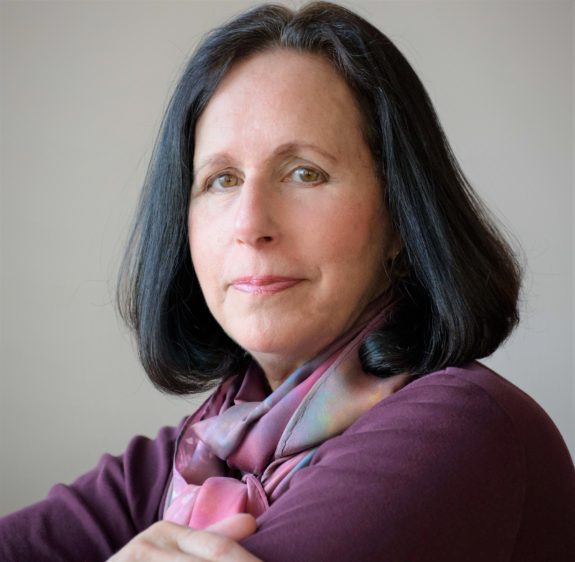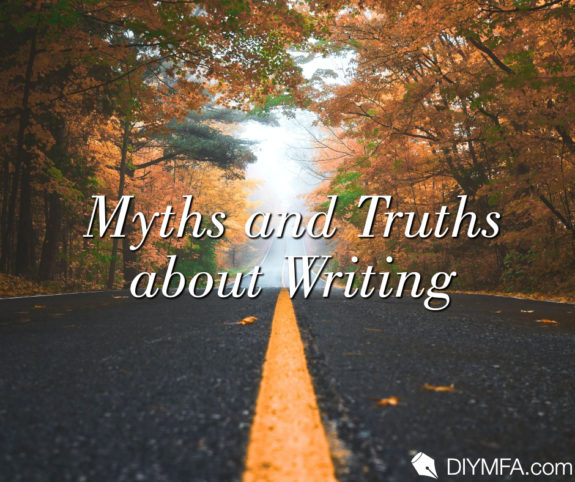I came late to the writing life. When I did arrive, it was with misconceptions, fantasies, myths, and misinformation. I discovered that I was not alone in this, but rather many other newcomers were also finding their hopes and dreams rooted not in reality but in wishful thinking. It’s a tough dichotomy: writing fiction requires a profound ability to fantasize but becoming a writer requires dedication to the logic of structure and the mastery of a vast array of skills, not the least of which is discipline. You have to sit down and actually write, preferably every day.
Two Myths about Writing
Everyone who took English in school at any level (and that’s all of us) thinks they can write. Or thinks they could if they wanted to. That’s myth number one. Myth number two is the first myth’s polar opposite — that writers are simply blessed with creative genius and therefore destined to write great works.
Consider these statistics. It took Boris Pasternak over ten years to write Doctor Zhivago, a sweeping historical saga that’s also a quintessential love story. Madame Bovary took Gustave Flaubert five years to finish and it’s considered one of the great works of literature and still defining how women feel marginalized by societal norms. Donna Tartt wrote her Pulitzer prize winner The Goldfinch over ten years and her previous novel, and the one that probably pre-cemented her place in the Pulitzer pantheon, The Secret History took her nine years to complete. All of these novels were huge successes, translated into many languages and perennial sellers.
Churning Out Books
Nora Roberts (a pen name), who also writes under the pen names J. D. Robb, Jill March, and Sarah Hardesty, churns out four books a year and has published over two hundred twenty-five romance novels in a variety of sub-genres. She is not alone, production wise. The famed British romance writer, Barbara Cartland often dictated her books (at times from a supine position on her couch) while one or more secretaries took simultaneous notes, but she also was a disciplined writer who produced some seven hundred books during her life.
So there you have it, some examples of the way of the writer. Which leads inevitably to an examination of what kinds of fiction writers today produce and how they get those novels into the world for readers to consume. There are many more avenues today than there used to be for both creators and consumers of fiction.
Two Kinds Of Writers
At this point in our fiction writing culture, there are two basic kinds of writers, whether self-published, Indie-hybrid published or traditionally published.
The first is the group of writers – Roberts, Cartland – who consider writing a profession like any other. Nuts and bolts, write because you have to make a living, satisfy a market niche, promote the hell out of your work, and deposit your checks somewhere safe because the work is too hard to risk the rewards on a hot stock. Some of these writers get rich beyond what they set out to do. Some make a reliable, if not extravagant, living. And while the literary world won’t be rewarding these writers with prestigious accolades like Pulitzers or National Book Awards, their readers are so devoted their books sell in the billions (of copies and dollars) thus undergirding a publishing industry that has suffered from neck-snapping economic whiplash over the past twenty or so years.
The second is the group – Tartt, Pasternak, Flaubert – who have something very personal to say, about themselves and the culture that influences and informs them. You won’t find them writing about vampires or shape-shifters. You won’t find sex scenes every ten pages in their books. You won’t be inundated by cutesy witches who fall in love with handsome hunks or lady detectives who wear provocative skirts and kick back with the boys in the squad room. These writers also have devoted fans, albeit for very different reasons one assumes.
Sometimes the two groups overlap – Jack London comes to mind, a perennial favorite whose works even my nine-year-old video-game-playing grandson relishes. There are others who cross from the purely personal to the powerhouse popular. I don’t know if this group actually sets out to write for a mass audience but sometimes they do garner mass appeal. The Handmaid’s Tale made Margaret Atwood a household name some thirty years after it first appeared and then only after she’d published numerous other novels, works of poetry, essays, short stories, and non-fiction.
Writing For The Long Haul
It seems the culture sometimes catches up to a work of fiction. On the other hand, when Herman Melville died in 1891, a paltry 3,215 copies of Moby Dick had sold. Today, with the book out of copyright, there are well over twenty different printings on Amazon alone. If Melville were alive today, he’d be enjoying a comfortable retirement along with high praise for his literary classic.
Which brings us to genre in novels. Is Moby Dick an adventure tale, a fishing story, historical fiction, a treatise on whaling, or a purely literary work? Because in today’s book writing/selling/buying environment, a novel is supposed to fit into a defined niche. And those niches are getting ever more narrow on one hand and diverse on the other.
Take the single biggest selling category in fiction today: the romance novel. With so many sub-genres of romance – historical, contemporary, suspense, erotic, religious, spiritual, paranormal, fantasy, sci fi, young adult, speculative, new adult, regency, suspense, romcom, time travel, Gothic – it’s hard to keep up as more seem to pop up every year. And that’s just one genre.
Fiction has been sliced and diced in so many ways, it’s dizzying to wander a bookstore’s stacks. But that’s the one thing agents and fiction editors tell new writers. Walk into a bookstore and find where your novel fits on a shelf. And pitch it as that genre. You can forget nuance. The more specific you can be about just what physical space your book occupies, the better. You may not be able to tell a book by its cover but by where it sits on a store shelf or what sub-genre you can search for on Amazon.
What Is Your Genre Anyway?
I used to think I wrote mainstream women’s fiction. Then I realized my work doesn’t stick to one genre. And that’s true of many writers–Margaret Atwood being just one example.
Once, when a friend asked me why I write, I realized I like to solve puzzles. Writing a novel is like a complex puzzle with lots of moving parts that can be assembled any number of ways. I like the figuring out process. I like the complexity, creating characters and giving them reasons for the things they do and think and feel. And I like developing the plot. That removes the “literary” genre because to so-called literary writers, plot is a no-no, although I still think of my work as having literary qualities.
These days, agents seem to demand that writers fit into predetermined molds or write what editors they have relationships with might buy. One agent told me recently: “I really like your manuscript and the first chapter is gripping. I just don’t know an editor I could sell it to.” It’s like the bookshelves. Where do you fit into an already constrained world?
Writing (er… Publishing) Options
When I began writing, the only way to get published was to get an agent to represent you or to try to reach a book editor who had the clout to buy your work. All that has changed and some of it remains the same. Open any book with a title like “How To get Published” or “Guide To The Literary Market” and you’ll find lists of agents, what kinds of fiction they take on, what they’re looking for and how to write a really dynamite query letter. On the other hand open Amazon or the Barnes and Noble site and you can publish your own work. And now, with the newer category of hybrid publishers, you can do a bit of both. That is, query one of these publishers and go into a more flexible economic relationship where you have more control but also will have distribution to bookstores and a team of professionals behind your work.
It’s lucky for writers that there are so many legitimate avenues open to them these days. You can pick your lane and if circumstances change, you can change lanes. Alternatives to a closed market are always better than a market that is controlled at the top by a select few. Writing requires emotional and psychological resilience. While writers are developing their skill sets, they must keep this in mind and not allow the world to tell them who or what they are and how to value themselves or their work.
In this era of disruption and digitization, the possibilities are open-ended and the choices these days are infinite. If there’s no bookshelf that fits a particular work, the writer can always build one to suit.
Five Rules For New (and Experienced!) Writers
- Expect a long learning curve
- Find excellent mentors either in workshops or writing classes
- Figure out where your writing is strong and expand on that strength
- Keep punching. Accept that rejection and indifference are part of the writing life.
- Read books by writers on writing (Annie Dillard’s The Writing Life, Ann Lamott’s Bird By Bird, Stephen King’s On Writing, to name just three and one on craft that I found especially helpful – J. Madison Davis’s Novelist’s Essential Guide to Creating Plot).

LB Gschwandtner has attended numerous fiction-writing workshops―the Iowa Writers Workshop and others―studied with Fred Leebron, Bob Bausch, Richard Bausch, Lary Bloom, Joyce Maynard, Sue Levine, and Wally Lamb, and published five adult novels, one middle-grade novel, and one collection of quirky short stories. She began her professional career as an artist, became a magazine editor in 1980, and began writing fiction in 1986. She’s won awards in literary contests and independent publishing contests, and been published in literary digests and magazines. A Place Called Zamora (September 2020) is her eighth book.







